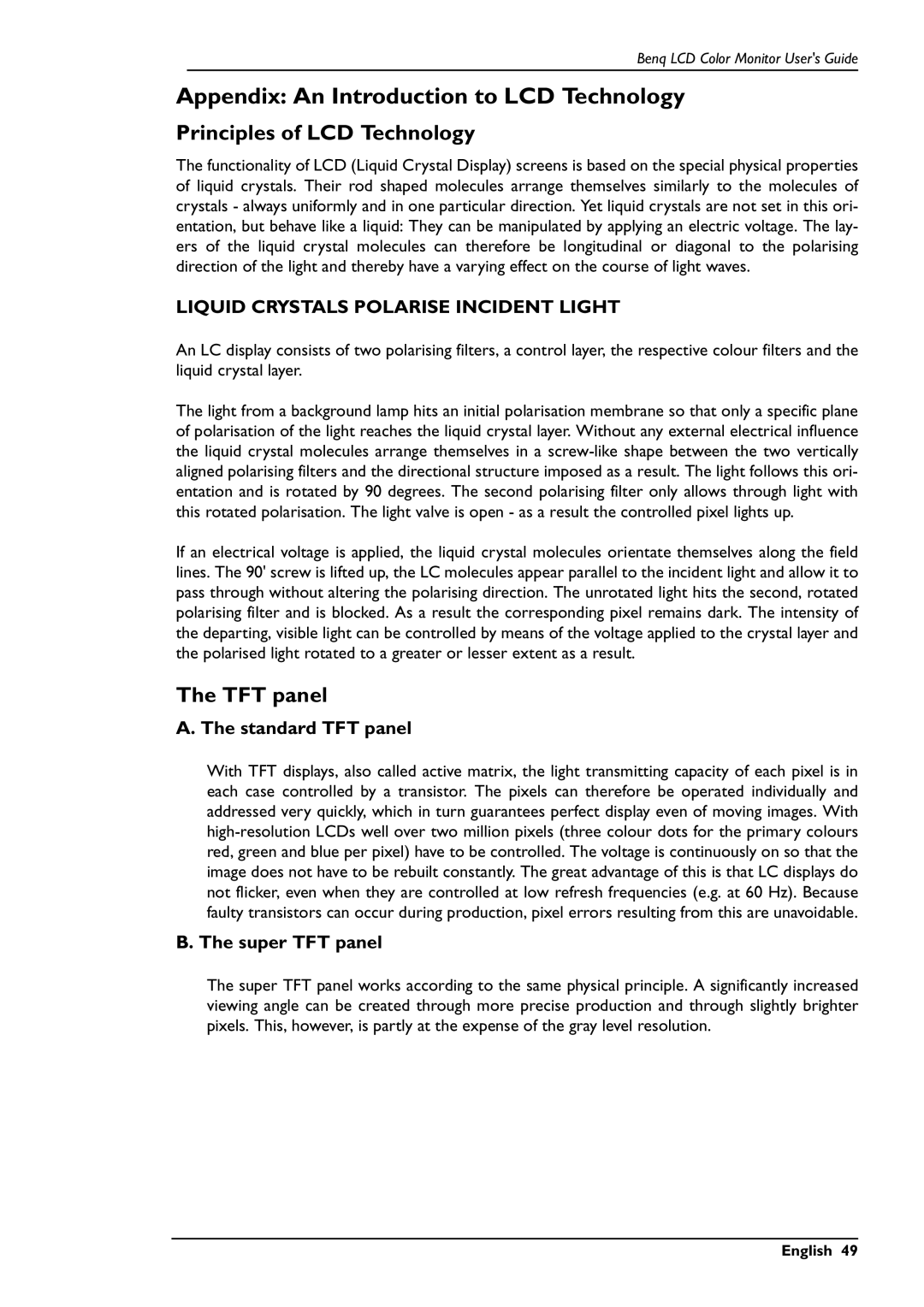
Benq LCD Color Monitor User's Guide
Appendix: An Introduction to LCD Technology
Principles of LCD Technology
The functionality of LCD (Liquid Crystal Display) screens is based on the special physical properties of liquid crystals. Their rod shaped molecules arrange themselves similarly to the molecules of crystals - always uniformly and in one particular direction. Yet liquid crystals are not set in this ori- entation, but behave like a liquid: They can be manipulated by applying an electric voltage. The lay- ers of the liquid crystal molecules can therefore be longitudinal or diagonal to the polarising direction of the light and thereby have a varying effect on the course of light waves.
LIQUID CRYSTALS POLARISE INCIDENT LIGHT
An LC display consists of two polarising filters, a control layer, the respective colour filters and the liquid crystal layer.
The light from a background lamp hits an initial polarisation membrane so that only a specific plane of polarisation of the light reaches the liquid crystal layer. Without any external electrical influence the liquid crystal molecules arrange themselves in a
If an electrical voltage is applied, the liquid crystal molecules orientate themselves along the field lines. The 90' screw is lifted up, the LC molecules appear parallel to the incident light and allow it to pass through without altering the polarising direction. The unrotated light hits the second, rotated polarising filter and is blocked. As a result the corresponding pixel remains dark. The intensity of the departing, visible light can be controlled by means of the voltage applied to the crystal layer and the polarised light rotated to a greater or lesser extent as a result.
The TFT panel
A. The standard TFT panel
With TFT displays, also called active matrix, the light transmitting capacity of each pixel is in each case controlled by a transistor. The pixels can therefore be operated individually and addressed very quickly, which in turn guarantees perfect display even of moving images. With
B. The super TFT panel
The super TFT panel works according to the same physical principle. A significantly increased viewing angle can be created through more precise production and through slightly brighter pixels. This, however, is partly at the expense of the gray level resolution.
English 49
